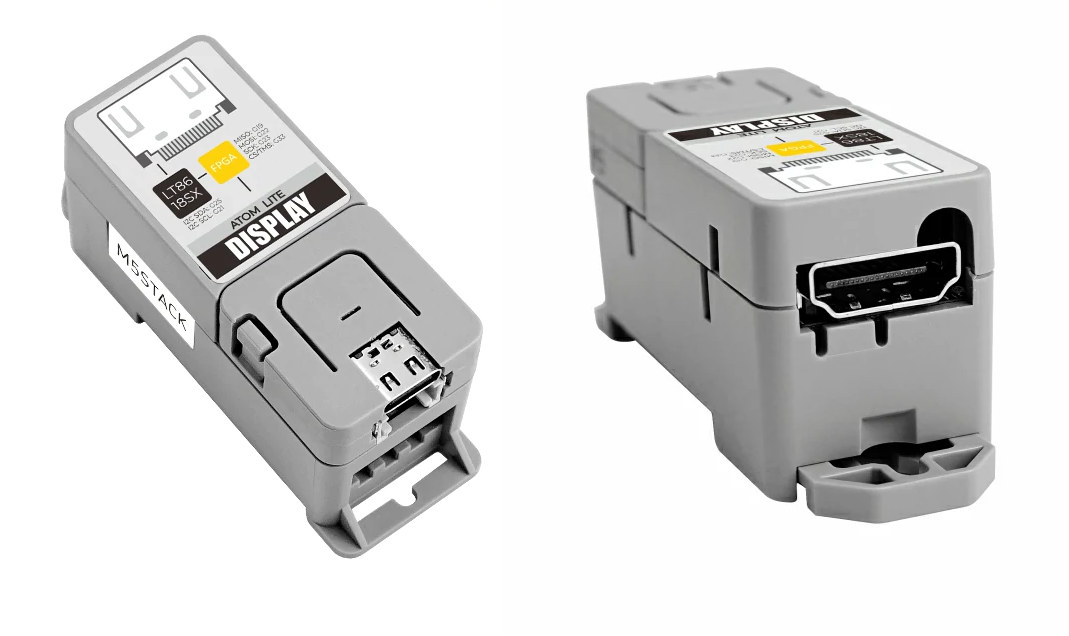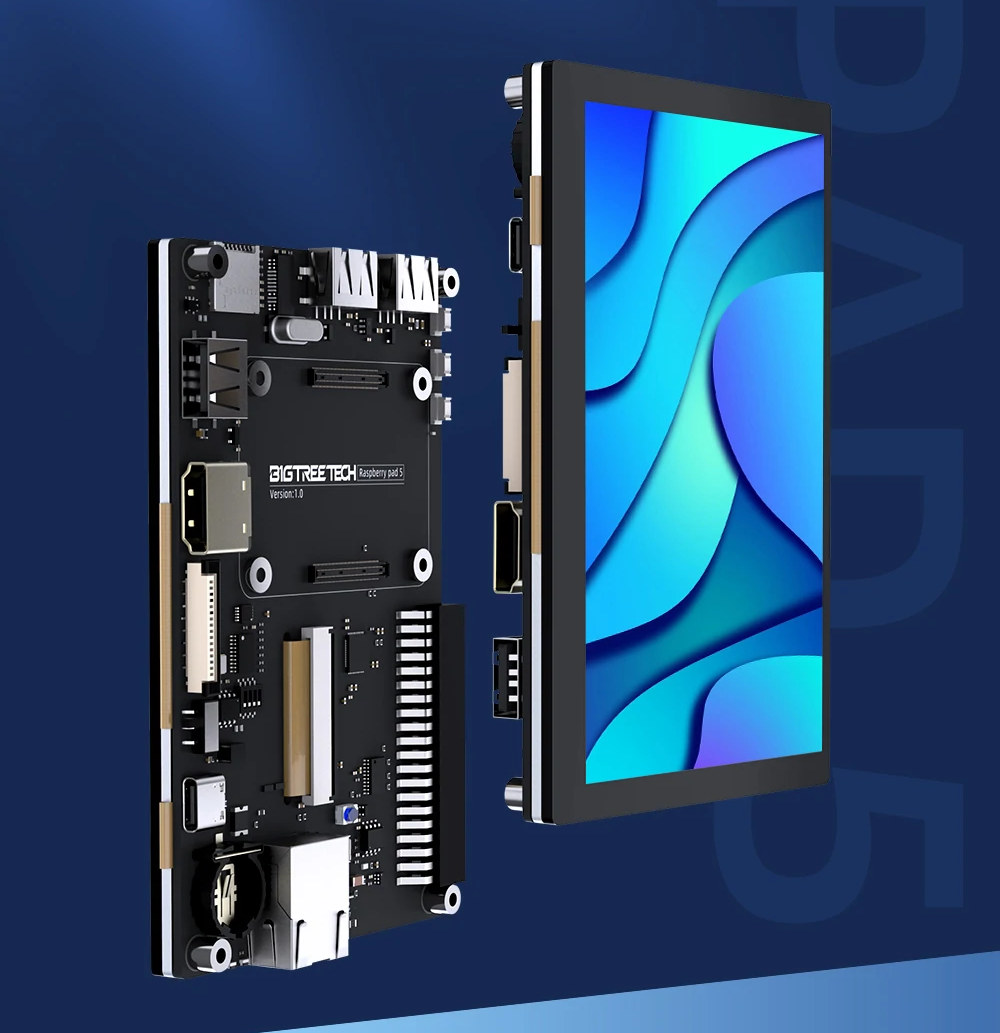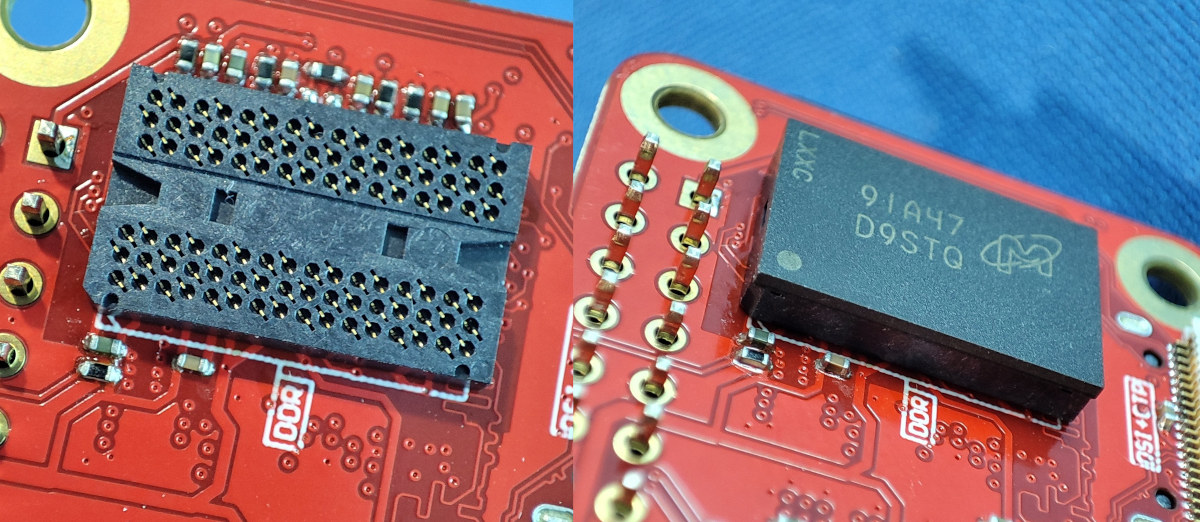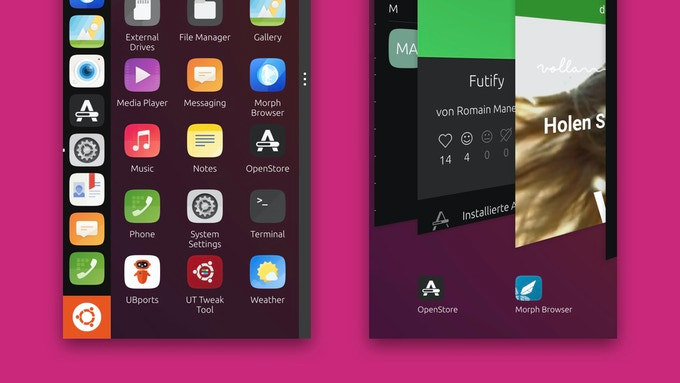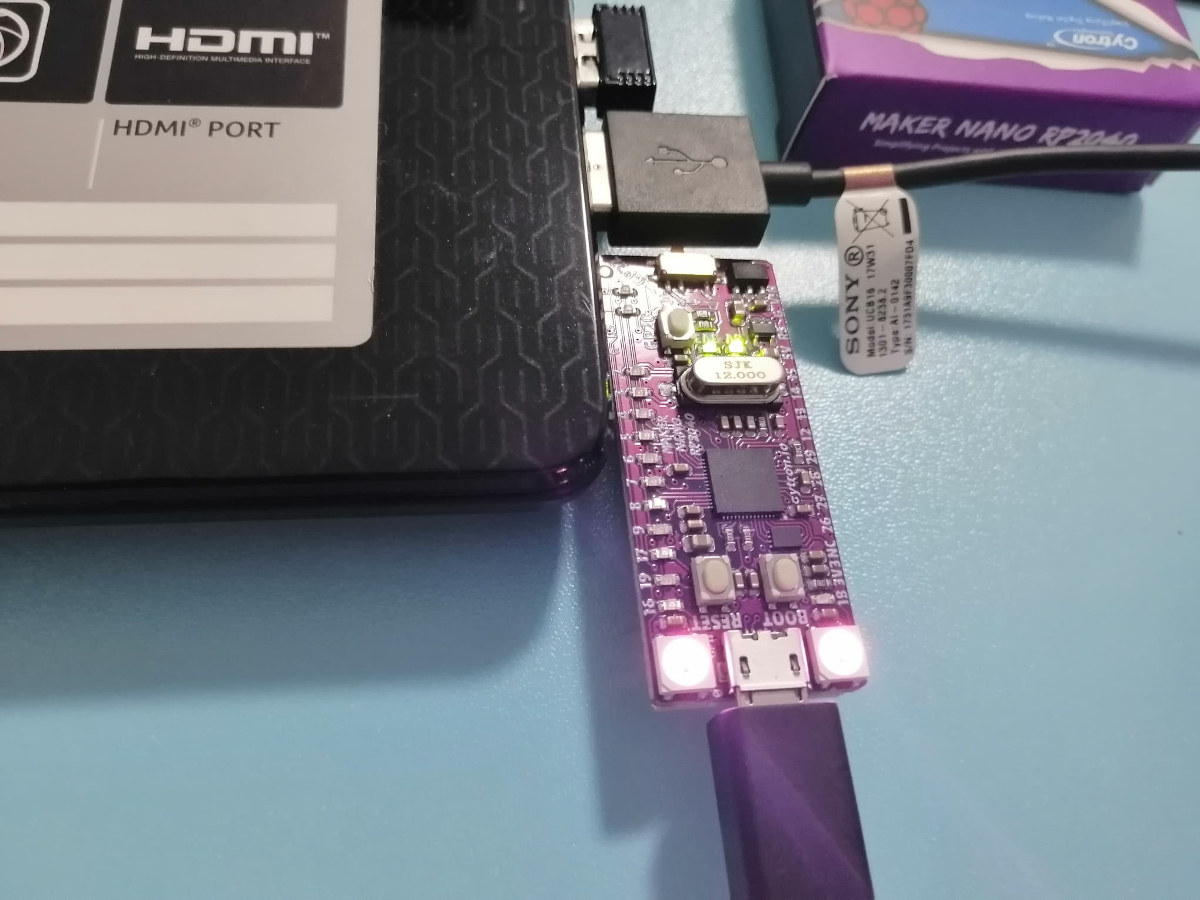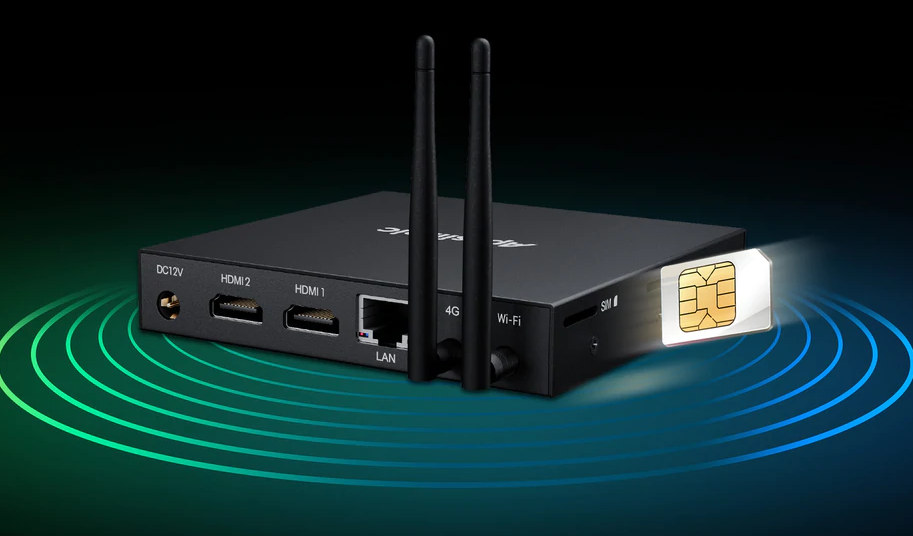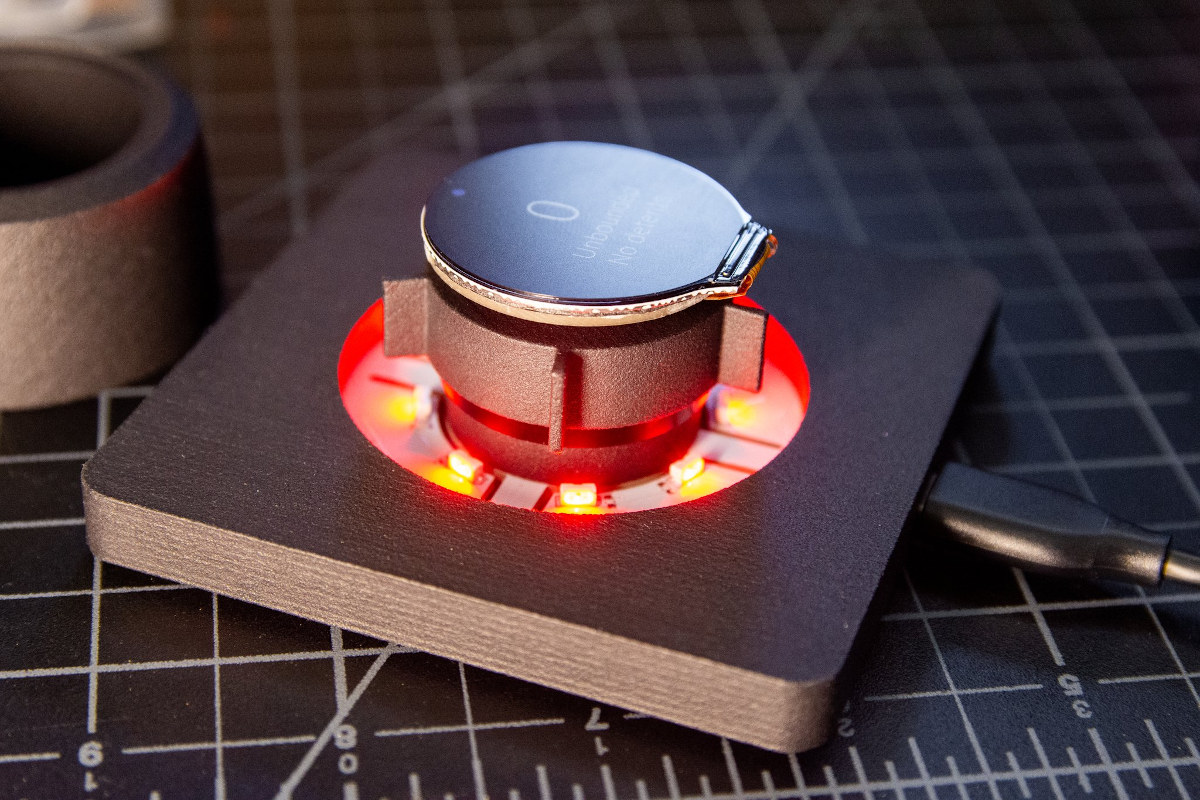M5Stack ATOM Display Lite is a kit based on GOWIN Gowin GW1NR-9C FPGA and LT8618SX RGB to HDMI chip designed to add HDMI output up to 720p to the company’s ESP32-based M5Stack ATOM Lite module. The ATOM Lite sees the ATOM Display Lite kit as an SPI display, but the solution outputs the data to an HDMI monitor or TV with up to 1280×720 resolution and can be used for information display, menu board, and more. ATOM Display Lite specifications: Wireless IoT modules – M5Stack ATOM Lite ESP32-PICO-D4 based module with 240MHz dual-core CPU, 520KB SRAM, 4MB flash, Wi-Fi 4 and Bluetooth connectivity FPGA – Gowin GW1NR-9C (PDF datasheet) FPGA with 8,640 LUTs used to simulate SPI TFT-LCD data output, HDMI bridge – Lontium Semi LT8618SX RGB to HDMI chip with 24-bit color depth up to 1280×720 output @ 60 fps (optimized frame rate up to 12 ~ 16FPS) Misc- […]
Raspberry Pad 5 Raspberry Pi CM4 carrier board integrates 5-inch display for 3D printers
BIGTREETECH Raspberry Pad 5 is a carrier board for the Raspberry Pi CM4 module with a 5-inch 800×480 display and mainly designed as a control panel for 3D printers, but also usable for other HMI applications. The carrier board also exposes a 40-pin GPIO header, and offers Gigabit Ethernet, HDMI video output, a MIPI CSI port for a camera monitoring the prints, a USB Type-C port, as well as three USB 2.0 ports for further peripherals expansion. Raspberry Pad 5 specifications: Compatible with Raspberry Pi CM4 and CM4 Lite modules Storage – MicroSD card slot (for Raspberry Pi CM4 Lite) Display – 5-inch IPS display with a 5-point capacitive touchscreen, 800×480 resolution Video Output – HDMI port Camera -1x MIPI CSI interface for compatible cameras from Raspberry Pi, Arducam, etc… Networking – Gigabit Ethernet RJ45 port, optional WiFi 5 and Bluetooth 5.0 (on RPI CM4) USB – 3x USB 2.0 […]
BGA socket allows RAM upgrades on SBCs
In most cases, both the eMMC flash and RAM are soldered on single board computers, but we’ve previously boards with eMMC flash modules that allows to optionally add storage of various capacity and speed. But today I learned something similar exists for RAM chips with a socket that allows you to clip a BGA chip to change RAM capacity. The BGA socket is simply soldered on the board instead of the RAM chip itself, and as demonstrated on the MangoPi MQ Pro board, you could then insert the chip on the board instead of soldering it. Those are the specifications of the “DDR3x16-96” socket used above: Materials Socket base: LCP (liquid crystal polymers) Contacts: BeCu (Beryllium Copper), selective Au-Au flash over Ni plating Insulation resistance – 1000 MOhm or more at DC 100V Dielectric withstanding voltage – 100V AC for one minute Contact resistance – 50 mOhm max, at 10mA […]
Volla Phone 22 runs Ubuntu Touch or a Google-free Android OS (Crowdfunding)
Volla Phone 22 is a 6.3-inch smartphone powered by a MediaTek Helio G85 processor that focuses on privacy and runs either Ubuntu Touch from UBPorts, Volla OS Android fork without Google Play services or apps (YouTube, Gmail, etc…), or others operating through a multi-boot. Hardware-wise, the Volla Phone 22 is a mid-range smartphone with 4GB RAM, 128GB storage, and it also comes with features not found on most recent smartphones including a user-replaceable battery, a 3.5mm audio jack, and a microSD card socket. Volla Phone 22 specifications: SoC – Mediatek Helio G85 octa-core processor with Arm Cortex-A75 cores @ up to 2.0 GHz, Cortex-A55 cores @ up to 1.8 GHz, Arm Mali-G52 MC2 GPU up to 1.0 GHz System Memory – 4GB RAM Storage – 128GB eMMC flash, microSD card socket Display – 6.3-inch Full HD display with 410 ppi pixel density. Audio – 3.5mm jack, built-in microphone and speaker […]
FOMO (Faster Objects, More Objects) enables real-time object detection on low-end embedded systems
FOMO used to stand for “Fear Of Missing Out” in my corner of the Internet, but Edge Impulse’s FOMO is completely different, as the “Faster Object, More Objects” model is designed to lower the footprint and improve the performance of object detection on resource-constrained embedded systems. The company says FOMO is 30x faster than MobileNet SSD and works on systems with less than 200K of RAM available. Edge Impulse explains the FOMO model provides a variant between basic image classification (e.g. is there a face in the image?) and more complex object detection (how many faces are in the image, if any, and where and what size are they?). That’s basically a simplified version of object detection where we’ll know the position of the objects in the image, but not their sizes. So instead of seeing the usual bounding box while the model is running, the face position will be […]
Getting started with Maker Nano RP2040 using CircuitPython: Blinky, RGB LED, and Piezo Buzzer
CNXSoft: This getting started guide was initially posted in Thai language by Suthinee Kerdkaew, and I’ve just translated her work into English with some minor edits. As discussed in an earlier article, Maker Nano RP2040 is a board following the Arduino Nano form factor, but with a more powerful Raspberry Pi RP2040 microcontroller. The board also comes with plenty of LEDs, as well as two RGB LEDs, and a piezo buzzer for audio output. Mr. Jean-Luc Aufranc has just given me a Maker Nano RP2040 board received from Cytron for review. I’ve never used a board before, so it’s my first experience, and in this article, I’ll try to program Maker Nano RP2040 with CircuitPython with three demos: a blinky sample, changing the color of the RGB LEDs, and playing a melody through the piezo buzzer. Let’s see if I can do it. Let’s get started. I first downloaded the […]
Apcsilmic Dot 1 – A Windows 11 Arm mini PC powered by Snapdragon 7c SoC
Apcsilmic Dot 1 is an affordable Snapdragon 7c powered Windows 11 Arm Mini PC that offers an alternative to ECS LIVA Mini Box QC710 Desktop Snapdragon 7c developer kit with extra features and resources. The Dot 1 mini PC comes with up to 8GB RAM, up to 256GB storage, dual HDMI output, as well as optional 4G LTE connectivity. It’s also thinner and remains fanless. Apcsilmic Dot 1 Mini PC specifications: SoC – Qualcomm Snapdragon SC7180 (Snapdragon 7c) with octa-core Qualcomm Kryo 468 (2x Cortex-A76, 6x Cortex-A55) CPU @ up to 2.4 GHz, Adreno 618 GPU Memory & Storage options 4GB RAM + 64GB storage 6GB RAM + 128GB storage 8GB RAM + 256GB storage MicroSD card on all variants Video Output – 2x HDMI ports up to 2K resolution (2560×1440) Audio – 3.5mm MIC jack, 3.5mm stereo audio jack Networking 10/100M Ethernet Dual-band WiFi 5, Bluetooth 5.1 with SMA […]
SmartKnob View is a DIY haptic input knob with WiFi and Bluetooth connectivity
Soon after writing about RoenDi rotary encoder with a built-in color display, readers pointed me to SmartKnob View, a similar-looking project but featuring an ESP32 module for WiFi and Bluetooth connectivity, plus software-configurable end-stops and virtual detents. The latter is enabled through a brushless gimbal motor paired with a magnetic encoder to provide closed-loop torque feedback control. Just like RoenDi, SmartKnob View comes with a 240×240 round color display but adds tactile feedback so you can change the menu when pressing the display. SmartKnob View specifications: Wireless module – LilyGO Tmicro32 Plys based on ESP32-PICO-V3-02 WiFi and Bluetooth LE SoC (May be changed to ESP32-S3-MINI-1 to enable USB HID support, once Arduino core supports it) Display – GC9A01 1.28-inch 240×240 round LCD covered by a 39.5mm watch glass on rotor Motor – BLDC gimbal motor, with a hollow shaft for mechanically & electrically connecting the LCD USB – 1x USB […]


